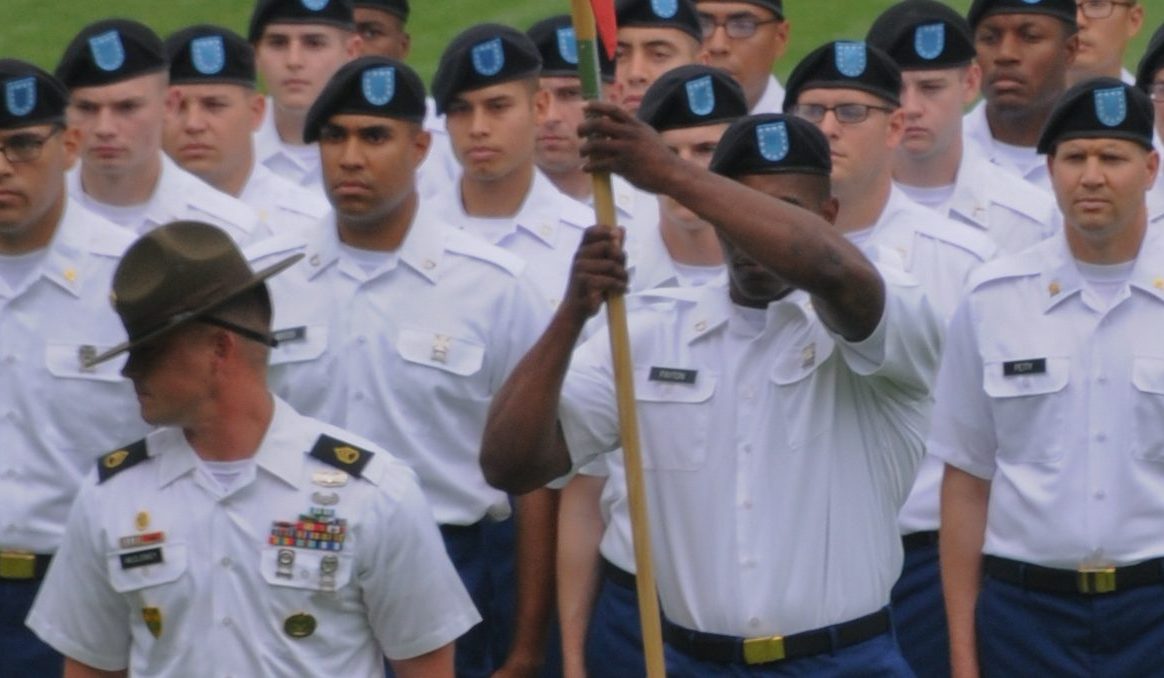

The Army will shoot to recruit 61,000 new soldiers in fiscal year 2025, Secretary of the Army Christine Wormuth announced Monday, an increase of 6,000 recruits after two recent years of missed goals
In late September, Army officials announced that it recruited 55,300 new soldiers in fiscal year 2024, meeting its annual goal for the first time in three years amid worsening recruiting environments.
“These challenges are not going away. Fewer than a quarter of Americans are eligible for military service, and fewer than ten percent of young people are interested in serving. Unemployment is at a historic low: more than sixty percent of high school graduates are going straight to college, and many young people know very little about the Army or what we offer,” Wormuth said Monday at the Association of the U.S. Army’s annual conference in Washington D.C.
In fiscal year 2024, around 13,200 recruits — or about one-fourth of the Army’s new soldiers — came from the service’s Future Soldier Prep Course, a 90-day pre-boot camp program that helps potential soldiers improve academically and physically to meet Army standards. The army also sent 5,000 recruits into its delayed entry program. Wormuth also said that Army recruiters secured more than 11,000 commitments into the delayed entry in 2024 who will actually join in 2025, setting the service up for a “strong” upcoming recruiting year.
But the 2025 goal announced by the secretary represents a return to benchmarks earlier in the decade as the Army tries to shift to meet deployment demands in Europe and the Pacific.
In 2022 and 2023, the service brought in just 45,000 recruits each year, 15,000 less than its annual goal. This year, the Army lowered its goal to 55,000. Kate Kuzminski, director of the military, veterans, and society program at a the Center for New American Security, a Washington D.C. think tank, told Task & Purpose after the Army announced it met its goal that the lowered number and new approach is part of the service’s plans to realign its force to be ready for potential future conflict with Russia or China.
She also noted that the Army is evolving to meet the needs and lifestyle of Gen Z recruits who “weren’t even born when 9/11 happened.” A lot of the new ideas that the Army is floating, she said, considers the younger generation’s desire for more “career flexibility, stability, and predictability.”
Subscribe to Task & Purpose today. Get the latest military news and culture in your inbox daily.
As traditional high school-aged recruits have become harder to find, the face of those joining the Army has changed in recent years. In September, Maj. Gen. Johnny Davis, commander of Army Recruiting Command, told reporters that the Army’s average recruit is now 22 years, 4 months old and still “going up.” He also said it’s in line with Wormuth’s goal announced in October to have one-third of the entire force be made up of college graduates.
“Data suggests they are prioritizing family life, genuine engagement with their bosses, and financial compensation over traditional job satisfaction,” Wormuth said about Gen Z recruits.
The new goals come after the Army announced an overhaul in its recruiting enterprise in October. The changes included recruiting more college graduates and new recruiter specialist MOS positions: 420T Talent Acquisition Technicians and 42T Talent Acquisition Specialists modeled off of corporate recruiters in the private sector.
On Monday, Wormuth also mentioned other ideas that the Army is considering like increasing options for military occupational specialties and branch transfers, reducing permanent change of station moves from five to three years, modifying officer timelines and promotion criteria, and matching financial compensation with responsibilities, qualifications, and job performance.
At the same time, Wormuth also acknowledged that big changes would require resources and policy changes which would come from Congress.
The latest on Task & Purpose
- Marine sergeant major fired from West Coast bootcamp now in brig amid investigation
- Army sends troops, artillery to the Aleutian Islands as Russian planes again fly near Alaska
- Marine who died trying to reach trapped Osprey pilots honored for final bravery
- Former West Point garrison commander cleared of most charges that led to firing
Navy’s first fully gender-integrated submarine joins the fleet. Here’s what that mea
